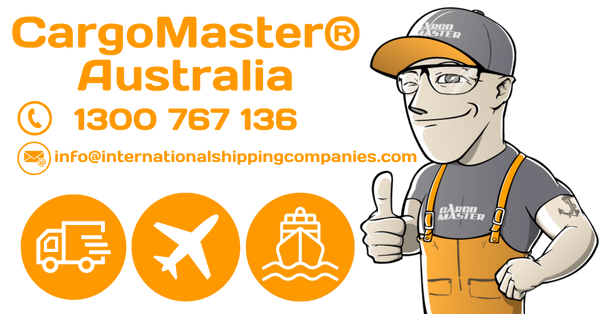About Us
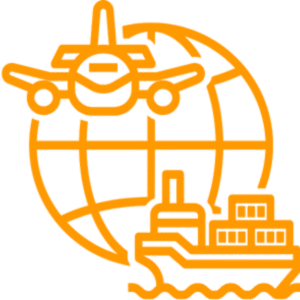 CargoMaster freight forwarders offers decades of expertise in international shipping. With over 35 years of hands-on experience, CargoMaster has earned a reputation for delivering cost-effective, reliable, and efficient freight solutions. Whether you are an individual moving overseas or a business seeking to streamline your global supply chain, CargoMaster is your trusted partner in navigating the complexities of international freight forwarding.
CargoMaster freight forwarders offers decades of expertise in international shipping. With over 35 years of hands-on experience, CargoMaster has earned a reputation for delivering cost-effective, reliable, and efficient freight solutions. Whether you are an individual moving overseas or a business seeking to streamline your global supply chain, CargoMaster is your trusted partner in navigating the complexities of international freight forwarding.
Our success is built on a commitment to exceptional service and innovative logistics practices. We manage every aspect of the shipping process in-house, ensuring complete control over your cargo’s journey. By minimizing unnecessary handling and eliminating third-party margins, we keep costs low and quality high. From global air and sea freight services to specialized logistics solutions, our team ensures your shipment reaches its destination securely and on time.
At CargoMaster, we understand that every client’s needs are unique. That’s why we offer tailored solutions to suit diverse requirements. Our personalized approach, combined with advanced tracking systems and strategic industry alliances, ensures that your shipping experience is seamless, efficient, and stress-free. Trust CargoMaster to simplify your logistics and deliver peace of mind with every shipment.
Our wide range of services includes same-day air freight, overnight air freight, sea freight forwarding, air freight forwarding, transshipment cargo services, customs clearance, global freight logistics, container groupage, Air freight import consolidation, sea freight import consolidation, door-to-door transport services, excess baggage, and project management consulting services.
Sea Freight
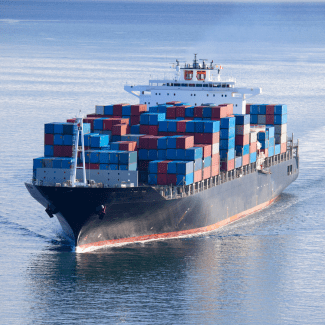 When it comes to sea freight, CargoMaster provides comprehensive and affordable shipping solutions that cater to businesses and individuals alike. Whether you’re moving large commercial consignments or personal items, our sea freight services are designed to meet your exact needs. We offer flexible options such as Full Container Load (FCL) and Less than Container Load (LCL) shipments, providing a cost-effective and efficient way to transport goods across the globe.
When it comes to sea freight, CargoMaster provides comprehensive and affordable shipping solutions that cater to businesses and individuals alike. Whether you’re moving large commercial consignments or personal items, our sea freight services are designed to meet your exact needs. We offer flexible options such as Full Container Load (FCL) and Less than Container Load (LCL) shipments, providing a cost-effective and efficient way to transport goods across the globe.
Our sea freight operations are supported by a robust network of international partners and agents, allowing us to offer unparalleled door-to-door services. From initial pick-up to customs clearance and final delivery, every stage of the journey is meticulously managed to ensure your cargo arrives on time and in pristine condition. Additionally, our team’s deep understanding of international regulations guarantees a smooth transit experience, regardless of your shipment’s destination.
Safety and reliability are the cornerstones of our sea freight services. At CargoMaster, we utilize state-of-the-art tracking systems to keep you updated on your shipment’s progress. Whether you’re shipping to Europe, Asia, or the Americas, you can rely on our expertise and commitment to excellence. Let us handle the logistics while you focus on what matters most.
20ft and 40ft Containers
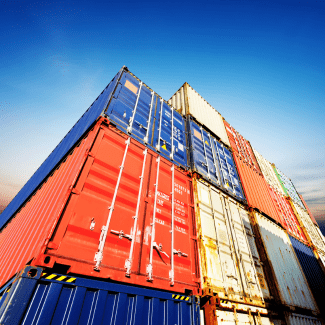 CargoMaster specializes in providing 20ft and 40ft container solutions, ideal for transporting larger consignments or high-volume goods. These containers offer a secure, cost-efficient way to ship everything from personal effects to commercial cargo. Whether you require a single container or multiple units, our services are tailored to accommodate shipments of all sizes and complexities.
CargoMaster specializes in providing 20ft and 40ft container solutions, ideal for transporting larger consignments or high-volume goods. These containers offer a secure, cost-efficient way to ship everything from personal effects to commercial cargo. Whether you require a single container or multiple units, our services are tailored to accommodate shipments of all sizes and complexities.
Our 20ft and 40ft containers are built to international shipping standards, ensuring maximum durability and security for your goods. They are perfect for long-haul shipping, offering optimal protection against weather, handling, and transit-related risks. With options for FCL and LCL shipping, we provide flexibility and scalability to match your unique requirements.
Choosing CargoMaster means more than just access to premium container services. It’s a partnership that delivers expertise, reliability, and efficiency. Our team ensures your containers are loaded, secured, and shipped with precision, giving you peace of mind at every step of the journey. Contact us today to learn how our container solutions can streamline your shipping process.
International Shipping Container Dimensions
| Type of Container | Inside Dimensions (m) | Door Opening (m) | Tare Weight (kgs) | Volume (cbm) | Loading Capacity (kgs) |
| 20′ Standard Container | 5.92×2.34×2.38 | 2.29×2.28 | 1.9 | 33 | 22.1 |
| 20′ Open Top Container | 5.92×2.34×2.38 | 2.29×2.28 | 2.177 | 31.6 | 21.823 |
| 20′ Reefer Container | 5.38×2.24×2.29 | 2.24×2.12 | 3.209 | 24.1 | 17.111 |
| 20′ Flatrack | 5.94×2.40×2.27 | 2.56 | 21.44 | ||
| 40′ Standard Container | 12.06×2.35×2.38 | 2.29×2.28 | 3.107 | 67.3 | 27.373 |
| 40′ Open Top Container | 12.064×2.34×2.37 | 2.29×2.25 | 4.445 | 64 | 26.067 |
| 40′ Reefer Container | 11.21×2.25×2.18 | 2.22×2.12 | 4.84 | 49.3 | 25.64 |
| 40′ Flatrack | 12.07×2.42×2.10 | 5.55 | 25.22 | ||
| 40′ High-Cube | 12.06×2.34×2.68 | 2.29×2.25 | 3.265 | 75.8 | 27.215 |
Self-Pack Containers
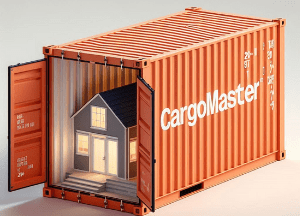 For those seeking convenience and control, CargoMaster’s self-pack containers offer the perfect solution. With this option, you have the flexibility to pack your goods at your own pace, ensuring they are organized to your satisfaction before shipping. Self-pack containers are a cost-effective and stress-free way to manage relocations or international shipments.
For those seeking convenience and control, CargoMaster’s self-pack containers offer the perfect solution. With this option, you have the flexibility to pack your goods at your own pace, ensuring they are organized to your satisfaction before shipping. Self-pack containers are a cost-effective and stress-free way to manage relocations or international shipments.
CargoMaster delivers the container directly to your location, allowing you the freedom to load it on your schedule. Once you’re ready, we take care of the transportation, ensuring your container reaches its destination securely. This service is ideal for families moving overseas, businesses relocating inventory, or anyone looking to save on packing costs while maintaining control over their shipment.
Our self-pack container service is backed by our extensive network and industry expertise. With advanced tracking systems and professional support throughout the process, CargoMaster ensures your goods are in safe hands. Explore our self-pack container options today and experience the ultimate in convenience and flexibility.
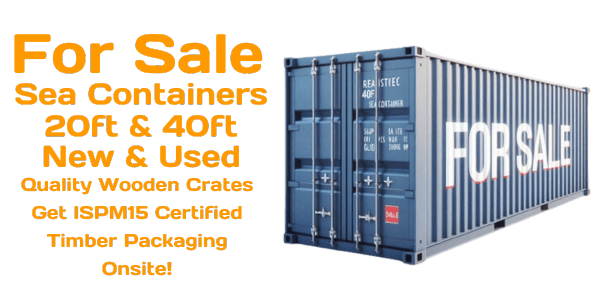
Specialized Freight Services & Break Bulk
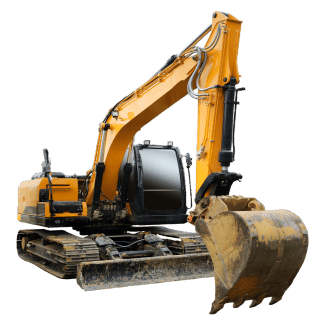 CargoMaster excels in handling specialized freight and break bulk cargo, catering to oversized or unconventional shipments that require expert attention. Whether you’re shipping heavy machinery, construction equipment, or project cargo, our team has the knowledge and resources to manage even the most challenging logistics.
CargoMaster excels in handling specialized freight and break bulk cargo, catering to oversized or unconventional shipments that require expert attention. Whether you’re shipping heavy machinery, construction equipment, or project cargo, our team has the knowledge and resources to manage even the most challenging logistics.
Our specialized freight services include customized handling, packaging, and transportation solutions designed to safeguard your valuable cargo. We coordinate with trusted industry partners to deliver seamless door-to-door service, ensuring your shipment is delivered safely and efficiently. No job is too complex for CargoMaster’s experienced professionals.
Break bulk shipping is another area where we shine. By offering tailored solutions for cargo that cannot fit into standard containers, we provide unparalleled flexibility and efficiency. Trust CargoMaster to deliver the expertise and precision needed for your specialized freight needs.
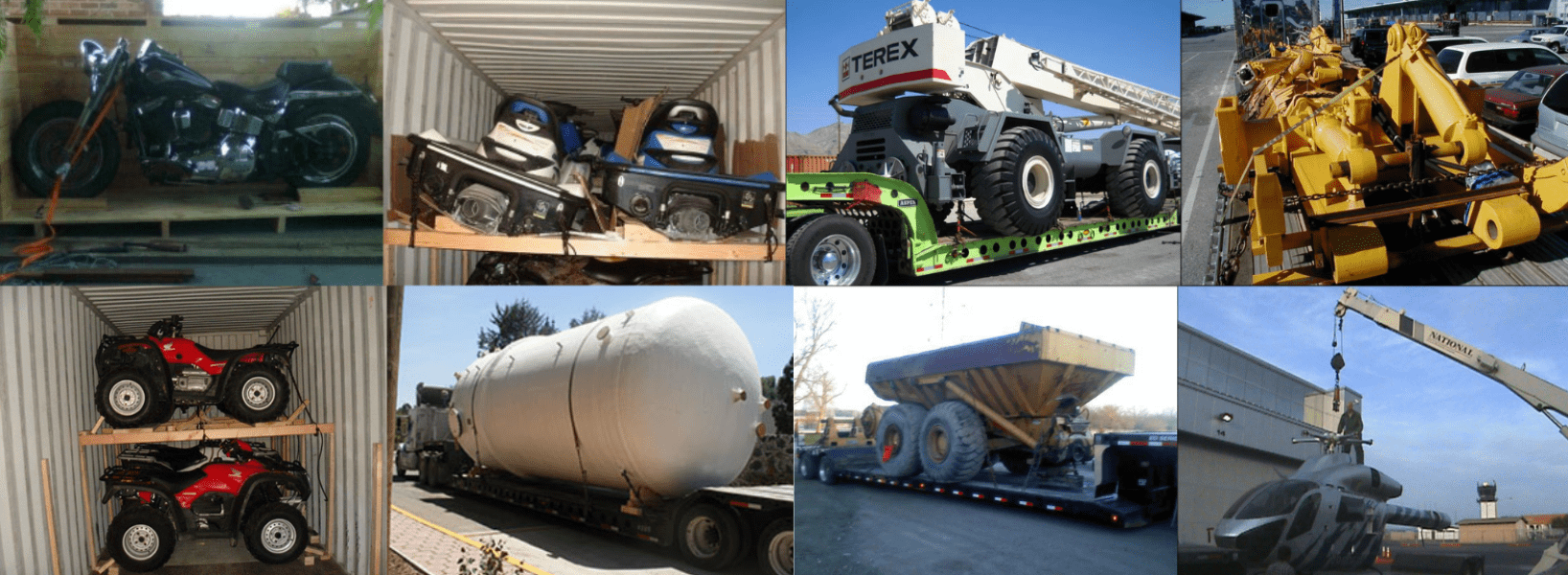
Customs Clearance
 Navigating customs clearance can be one of the most challenging aspects of international shipping, but CargoMaster is here to make it simple. Our experienced team specializes in managing the complexities of customs procedures, ensuring your goods move seamlessly across borders.
Navigating customs clearance can be one of the most challenging aspects of international shipping, but CargoMaster is here to make it simple. Our experienced team specializes in managing the complexities of customs procedures, ensuring your goods move seamlessly across borders.
We provide comprehensive customs clearance services, including documentation preparation, compliance checks, and tariff calculations. By staying up to date with the latest regulations, CargoMaster minimizes delays and avoids costly penalties, giving you peace of mind throughout the shipping process.
With CargoMaster, you gain access to a network of experts who prioritize efficiency and accuracy. Let us handle the paperwork while you enjoy a hassle-free shipping experience. Contact us today to learn more about our comprehensive customs clearance services.
Additional Information
(Click the +/- plus/minus symbols to expand/collapse)
SEA FREIGHT SHIPPING LINES
- ACL Atlantic Container Line
- Alianca Navegaceo e Logistica Ltda.
- ANL Container Line
- APL American President Line
- ARKAS LINE
- Bahr
- CCNI
- CSCL CHINA SHIPPING CONTAINER LINES
- CMA-CGM
- CNC LINE Cheng Lie Navigation
- COSCO CONTAINER LINES
- COSCO USA
- COSCO Canada
- CP SHIPS
- CROWLEY
- CSAV
- CSAV Norasia
- DAL – Deutsche Afrika Linien
- DELMAS
- EIMSKIP
- Emirates Shipping Line
- Evergreen Lines
- FESCO
- Gold Star Line
- Grieg Star Shipping
- Grimaldi Lines
- Hamburg-Sued (Columbus Line)
- Hanjin
- Hapag-Lloyd
- HAWK CONTAINER LINES
- HEUNG A Shipping
- HORIZON Lines
- HUBLine
- HUGO STINNES
- HYUNDAI Merchant Marine (HMM)
- Ignazio Messina Line
- INTERASIA Lines
- Italia Marittima
- Kambara Kisen
- Kestrel Liner
- KMTC Line
- LIBRA
- MACS Shipping
- Maersk Line
- MARFRET Compagnie Maritime
- MAXICON Container Line
- MOL Mitsui OSK Lines
- MSC
- NSCSA National Shipping Company of Saudi Arabia
- Nordana
- NYK Nippon Yusen Kaisha Lines
- Ocean Empire Lines
- OOCL
- PDL Pacific Direct Line
- PIL Pacific International Lines
- POLLUX & CASTOR
- RCL Regional Container Lines
- Royal Arctic Lines
- Safmarine
- SCI Shipping Corporation of India
- Seaboard Marine
- Seago Line
- Sea Star Line
- Sinokor
- Sofrana
- STX PanOcean
- Swire Shipping
- Tarros
- TCC The Containership Company
- T.S. Lines
- TRANSLINER
- UASC United Arab Shipping Co
- Wan Hai Lines
- W.E.C. Lines
- WESTWOOD SHIPPING LINES
- Yang Ming
- Zim Line
SEA FREIGHT CONTAINER SIZE OPTIONS
| Type of Container | Inside Dimensions (m) | Door Opening (m) | Tare Weight (kgs) | Volume (cbm) | Loading Capacity (kgs) |
|---|---|---|---|---|---|
| 20' Standard Container | 5.92x2.34x2.38 | 2.29x2.28 | 1.9 | 33 | 22.1 |
| 20' Open Top Container | 5.92x2.34x2.38 | 2.29x2.28 | 2.177 | 31.6 | 21.823 |
| 20' Reefer Container | 5.38x2.24x2.29 | 2.24x2.12 | 3.209 | 24.1 | 17.111 |
| 20' Flatrack | 5.94x2.40x2.27 | 2.56 | 21.44 | ||
| 40' Standard Container | 12.06x2.35x2.38 | 2.29x2.28 | 3.107 | 67.3 | 27.373 |
| 40' Open Top Container | 12.064x2.34x2.37 | 2.29x2.25 | 4.445 | 64 | 26.067 |
| 40' Reefer Container | 11.21x2.25x2.18 | 2.22x2.12 | 4.84 | 49.3 | 25.64 |
| 40' Flatrack | 12.07x2.42x2.10 | 5.55 | 25.22 | ||
| 40' High-Cube | 12.06x2.34x2.68 | 2.29x2.25 | 3.265 | 75.8 | 27.215 |
SHIPPING CONTAINER DIMENSIONS
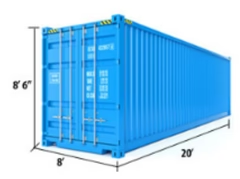 20 ft Standard Dry (8'6" x 8' x 20')
20 ft Standard Dry (8'6" x 8' x 20')
Weight: 4500lbs
Max Gross Weight: 66,139lbs
Interior Dimensions:
Length: 19′ 5″
Width: 7′ 8-⅛”
Height: 7′ 9-⅝”
Door Opening:
Width: 7’ 8-½”, Height: 7’ 5-¾”
40 ft Standard Dry (8'6" x 8' x 40')
Weight: 8500lbs
Max Gross Weight: 66,139lbs
Interior Dimensions:
Length: 39′ ⅜”
Width: 7′ 8-⅛”
Height: 7′ 9-⅝”
Door Opening:
Width: 7’ 8-½”, Height: 7’ 5-¾”
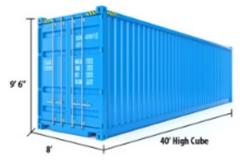 40 ft High Cube (9'6" x 8' x 40')
40 ft High Cube (9'6" x 8' x 40')
Weight: 8750 lbs
Max Gross Weight: 68,008lb
Interior Dimensions:
Length: 39′ 4”
Width: 7′ 7”
Height: 8′ 9″
Door Opening: Width:
7’ 8″‘, Height: 8’ 5”
 Dimensions of 20ft Flat Rack Container
Dimensions of 20ft Flat Rack Container
Internal length 5.94 m / 19.5 ft
Internal width 2.35 m / 7.7 ft
Internal height 2.35 m / 7.7 ft
Tare weight 2,360 kg / 5,203.8 lbs
Payload capacity: 30,140 kg / 66,458.7 lbs
Cubic capacity 32.7 m³ / 1,154.3 cu ft
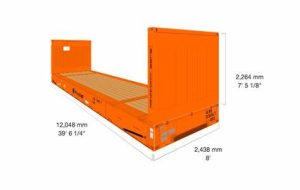 Dimensions of 40ft Flat Rack Container
Dimensions of 40ft Flat Rack Container
Internal length 12.13 m / 39.8 ft
Internal width 2.40 m / 7.9 ft
Internal height 2.14 m / 7 ft
Tare weight 5,000 kg / 11,025 lbs
Payload capacity: 40,000 kg / 88,200 lbs
Cubic capacity 62.2 m³ / 2,195.7 cu ft
HIDDEN DANGEROUS AIR CARGO
Please Note: The below list does not describe all types of hazardous air cargo (it is not exhaustive and all encompassing). General items listed below may be found in baggage and possibly have hazards that are not immediately apparent. There are strict laws in relation to lodging of hazardous air cargo and compliance with hazardous air cargo regulations.
Typical examples of hazardous air cargo
Engines (contain fuel and that are not cleaned, purged and sealed)
Mining equipment
Magnets
Pressurised containers
Passenger baggage (containing flammable gas or liquid lighter refuel. camping stove cylinders
Photographic Supplies
Expeditionary equipment
Vaccines
Solvents, adhesives
Pesticides
Dental apparatus
Machinery parts
Frozen foods (packed in solid dry ice)
Dry Ice
Tool Boxes (compressed gases, aerosols)
Electrical equipment
Diving equipment
Pharmaceuticals
Switches in electrical equipment
Toys (made of cellulose)
Refrigerators (may contain gases or chemicals)
Swimming pool chemicals
Pressurised containers
Engines (contain fuel and that are not cleaned, purged and sealed)
Mining equipment
Diagnostic specimens
Thermometers (containing mercury)
Frozen Embryos
Ammunition
Swimming pool chemicals
Aerosols
Compressed non-flammable gas
Batteries
Breathing Apparatus
Frozen foods (packed in solid dry ice)
Motor Vehicle parts
Chemicals
HAZARD LABELS FOR DANGEROUS GOODS (DG)
Hazard Labels for Dangerous Goods (DG)
The international community has established a classification system for easy identification of dangerous goods. These goods fall into nine primary classes, and some classes are further divided to address specific risks. Each class/division has a corresponding label that accurately represents the nature of the hazard. These labels must be attached to the package during transport and remain intact throughout the journey. Take a look at the illustrated examples below to understand how these labels effectively communicate the potential dangers.
Under regulations, labels must be clearly visible on the outside of the package and must stay on the package while in transit.
You can often find labels printed on most inner packages such as:
- aerosol cans
- bottles of bleach
- containers of thinners
- tins of paint
- many other products which are available at supermarkets and hardware stores.
Below are the 9 hazard labels for the 9 classes of dangerous goods.
Class 1 Explosives

This includes items such as:
- explosive substances
- pyrotechnic devices
- ammunition
- fireworks
- detonators.
Class 2 Gases

These can be transported as:
- compressed
- liquefied
- refrigerated liquefied
- gas in solution.
This includes aerosols. Class 2 has 3 divisions:
- Division 2.1 - flammable gases such as:
- butane
- propane
- Division 2.2 - non-flammable, non-toxic gases such as:
- oxygen
- liquid nitrogen
- compressed air
- Division 2.3 - toxic gases such as:
- chlorine
- hydrogen sulphide.
Class 3 Flammable liquids

This includes liquids with a boiling point of 35⁰ C or less, or a flash point of 60⁰ C or less such as:
- petrol
- alcohol
- perfumes
- essential oils
- hand sanitiser
- paints.
Class 4 Flammable solids

These are substances that can spontaneously combust and substances, that when they come into contact with water or emit flammable gases. Class 4 has 3 divisions:
- Division 4.1 - flammable solids such as:
- hexamine solid fuel tablets for camping stoves
- self-reactive substances
- desensitised explosives
- Division 4.2 - substances that can spontaneously combust under normal air transport conditions include:
- camphor
- sulphur
- matches
- Division 4.3 - substances that emit flammable gases when they come into contact with water include:
- sodium
- zinc particles
- activated carbon.
Class 5 Oxidising substances and organic peroxides

These substances are not necessarily combustible on their own but can react dangerously with other substances. Class 5 has 2 divisions:
- Division 5.1 - oxidising substances that may not be necessarily combustible, but they may readily yield oxygen and cause other materials to combust, such as:
- hydrogen peroxide
- ammonium nitrate
- potassium chlorate
- sodium nitrate
- Division 5.2 - organic peroxides are thermally unstable and can emit heat and give off harmful or flammable vapours. They can also be liable to explosive decomposition and react dangerously with other substances. Examples are:
- acetyl acetone peroxide
- benzoyl peroxide
- peracetic acid.
Class 6 Toxic and infectious substances

These substances can cause sickness, injury or death if consumed. Class 6 has 2 divisions:
- Division 6.1 - toxic substances that can cause death, injury or to harm human health if swallowed, inhaled or by skin contact, such as:
- chloroform
- arsenics
- cyanides
- cytotoxic waste
- barium compounds
- pesticides
- Division 6.2 - infectious substances that contain or are expected to contain pathogens that can cause disease in humans or animals, including:
- medical or clinical waste
- patient specimens
- genetically modified organisms
- infectious substances
- infected animals.
Class 7 Radioactive materials

These are substances that emit invisible ionising radiation that can be harmful to humans and animals. It can cause objects such as aircraft and equipment to become contaminated if not packaged and handled correctly, such as:
- uranium
- radioactive ores
- isotypes
- radium
- cesium
- x-ray equipment
- medical equipment or parts.
Class 8 Corrosives

These substances can cause irreversible damage if they come into contact with skin and could destroy other freight, or materially damage containers or aircraft. This includes:
- acids
- corrosive cleaners
- battery fluid
- formaldehyde
- hydrofluoric acid.
Class 9 Miscellaneous
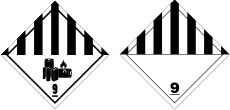
These are substances and articles which, during air transport, present a danger not covered by other classes. There are 2 types of handling labels – 1 for lithium battery shipments, and another for all other miscellaneous dangerous goods. This class includes:
- lithium batteries
- battery powered vehicles
- battery powered equipment
- first aid kids
- environmentally hazardous substances
- dry ice
- magnetised materials
- asbestos.
Handling labels
In addition to hazard labels, trained staff must attach handling labels where needed. Staff must use these 4 handling labels with the appropriate hazard labels:
Cargo aircraft only

This label is used to show that the load cannot be carried on a passenger aircraft.
Cyrogenics

This label is used on liquefied gases, such as the ones in Class 2.
This way up

This label ensures a load is placed the correct way up and can be used for non-dangerous goods.
Magnetised material

This label ensures that the load is kept away from the aircraft compass detector unit while being loaded and unloaded.
EXPORT DOCUMENTATION
An Overview of Bills of Lading: Ensuring Precision in Shipping
Why is it crucial to verify Bill of Lading details?
The Bill of Lading meticulously captures the smallest shipment details, providing an exact representation of your cargo. This document is pivotal for identifying your shipment and becomes invaluable in dispute scenarios, especially when handling liability claims for damaged, lost, or delayed shipments.
When is the Bill of Lading Issued?
As a specialist in international shipping and freight, CargoMaster places utmost importance on accuracy in shipping dates, marks, and cargo descriptions when issuing the Bill of Lading. Adhering to maritime regulations, CargoMaster ensures precise details, recognising the significance of the date on the Bill of Lading, marking the enforcement of the shipment contract.
How is the Bill of Lading Compiled?
The compilation of a Bill of Lading involves several checks within the export documentation flow. Freight Forwarders like CargoMaster play a crucial role, ensuring accurate details such as container and bolt seal numbers, vessel information, weights, pieces loaded, and voyage numbers. While Bills of Lading are typically issued after the vessel sails, special requests may lead to earlier issuances.
A Contract in Documentation: The Bill of Lading
Functioning as a contract between the International Shipping Company and the cargo shipper, the Bill of Lading mirrors other contractual agreements, like a residential tenancy agreement. To meet international standards, Bills of Lading must align with conventions such as The Hague Rule, Hague-Visby Rule, Hamburg Rule, and The Carriage of Goods by Sea Act Australia 1991.
Insight into the Documentation Timeline
Disputes regarding Bill of Lading issues primarily emerge in cargo exportation. The export documentation flow involves meticulous coordination, ensuring the timely gathering of information from various sources. CargoMaster, handling machinery and out-of-gauge cargo, faces additional documentation requirements for compliance with international regulations.
International Freight Certificates: Navigating Export Documentation
Certificate of Free Sale (CFS)
A crucial document confirming the approval to sell goods in Australia, essential for customs clearance and import processes in certain overseas markets.
When exporting to certain countries you will require a Certificate of Free Sale (CFS), also called an export certificate or certificate of export. An Export Certificate confirms in writing that you can sell your goods in the Australian market and that there are no restrictions. The Certificate of Free Sale certifies that you have the approval of relevant authorities to sell your goods in Australia.
The overseas purchaser of your products may have problems with customs clearance and registration process’s if you do not provide a CFS when required, your buyer may not be able to import your product into their country. You may need to present this certificate as part of the customs clearance or registration process.
A CFS is often requested for products such as:
- food-based products
- medical parts, devices and products
- certain complementary, prescription, and over the counter medicines.
Not all countries require a CFS, the need for a Certificate of Free Sale will depend on your product and your export market. Speak with your buyer to find out if you need a CFS.
Where can I get a Certificate of Free Sale?
To find out more and apply for a Certificate of Free Sale (CFS) visit:
- Department of Health Therapeutic Goods Administration
- Department of Agriculture, Water and the Environment
- Australian Chamber of Commerce and Industry (ACCI)
ATA Carnet (Admission Temporary Admission)
Facilitates the temporary entry of goods into foreign countries, providing exemptions for import duties and taxes. Commonly used for high-value goods at exhibitions, trade shows, motorsports, and audiovisual production.
An ATA Carnet is an international document that permits temporary the temporary entry of commodities into overseas countries. Carnets are used for goods that are intended to be imported for a short period of time, then exported back to the country of origin. It provides exemptions for import duties and taxes. It is most often used for high-value goods imported for specific uses.
Typical goods that may be transported under a Carnet:
- cars, bikes, boats, caravans or trailers for exhibitions and trade shows
- es or cars and other vehicles used for motorsports
- equipment, trucks, and machinery for mining or farming
- cameras and other equipment used for filming and audiovisual production.
To apply for a Carnet contact The Australian Chamber Of Commerce and Industry
Australian Chamber of Commerce and Industry www.australianchamber.com.au/international/certificates-of-origin (ACCI).
Phytosanitary Certificate
Required for regulated commodities like plants and plant products, certifying compliance with quarantine regulations and the absence of pests.
Phytosanitary Certificates available from the Department of Agriculture, Water and Environment.
Certificate of Origin (CoO)
Government-certified or authorised entity-issued document confirming the origin of commodities, essential for Free Trade Agreements (FTAs) and customs clearance.
Note: Always check specific product and market requirements for accurate documentation needs.
Certificates of Origin are needed when Origin when
- exporting to countries where Australia has a current Free Trade Agreement (FTA)
- it is requested by the importer for customs clearance
- it is specified in a Documentary Letter of Credit.
Some agreements will allow for a self-certification, while others require a certificate from an authorised body. Self-certification carries a high level of risk and is not recommended for new exporters.
There are 2 types of Certificates of Origin
- Preferential certificates
A Preferential certificate will assist customs authorities to confirm your compliance with trade agreements made, tariffs and and Rules of Origin. Rules of Origin (ROO) are an agreed set of rules between countries that share a preferential trade agreement, such as a Free Trade Agreement (FTA). ROO set out the criteria for which goods are eligible for free or preferential import tariffs. Typically, they require a product to be entirely produced in a one of the participating countries or have a minimum percentage of the value produced there. They can be complex to understand so speak with your customs broker or freight forwarder or visit the DFAT Free Trade Agreement Portal.
Note: If Australia has a Free Trade Agreement (FTA) with the country you are exporting to you can apply for a Preferential certificate
2. Non-preferential certificates
Local governments of most countries issue non-preferential certificates to collect statistical data and ensure you are meeting:
- government sanctions
- anti-dumping rules
- quotas
- general tariffs.
Where can I get a Certificate of Origin?
To find out more and apply for a Certificate of Origin (COO) visit:
- Australian Chamber of Commerce and Industry (ACCI)
- Australian Industry Group (AI Group)
- International Export Certification Services (IECS)
For information about the documents needed for specific products check out.
CargoMaster ensures a seamless freight experience, combining expertise, accuracy, and compliance for precise cargo transport. Call us at 1300 767 136 for tailored shipping solutions and competitive rates.
INCOTERMS
INCOTERMS are standard trade terms most commonly used in international freight contracts for sale of goods. It is essential that you are aware of your terms of trade prior to shipment.
EXW – EX WORKS (… named place of delivery)
The Seller’s only responsibility is to make the goods available at the Seller’s premises. The Buyer bears full costs and risks of moving the goods from there to destination.
FCA – FREE CARRIER (… named place of delivery)
The Seller delivers the goods, cleared for export, to the carrier selected by the Buyer. The Seller loads the goods if the carrier pickup is at the Seller’s premises. From that point, the Buyer bears the costs and risks of moving the goods to destination.
CPT – CARRIAGE PAID TO (… named place of destination)
The Seller pays for moving the goods to destination. From the time the goods are transferred to the first carrier, the Buyer bears the risks of loss or damage.
CIP– CARRIAGE AND INSURANCE PAID TO (… named place of destination)
The Seller pays for moving the goods to destination. From the time the goods are transferred to the first carrier, the Buyer bears the risks of loss or damage. The Seller, however, purchases the cargo insurance.
DAT – DELIVERED AT TERMINAL (… named terminal at port or place of destination)
The Seller delivers when the goods, once unloaded from the arriving means of transport, are placed at the Buyer’s disposal at a named terminal at the named port or place of destination. “Terminal” includes any place, whether covered or not, such as a quay, warehouse, container yard or road, rail or air cargo terminal. The Seller bears all risks involved in bringing the goods to and unloading them at the terminal at the named port or place of destination.
DAP – DELIVERED AT PLACE (… named place of destination)
The Seller delivers when the goods are placed at the Buyer’s disposal on the arriving means of transport ready for unloading at the names place of destination. The Seller bears all risks involved in bringing the goods to the named place.
DDP – DELIVERED DUTY PAID (… named place)
The Seller delivers the goods -cleared for import – to the Buyer at destination. The Seller bears all costs and risks of moving the goods to destination, including the payment of Customs duties and taxes.
MARITIME TERMS
FAS – FREE ALONGSIDE SHIP (… named port of shipment)
The Seller delivers the goods to the origin port. From that point, the Buyer bears all costs and risks of loss or damage.
FOB– FREE ON BOARD (… named port of shipment)
The Seller delivers the goods on board the ship and clears the goods for export. From that point, the Buyer bears all costs and risks of loss or damage.
CFR– COST AND FREIGHT (… named port of destination)
The Seller clears the goods for export and pays the costs of moving the goods to destination. The Buyer bears all risks of loss or damage.
CIF – COST INSURANCE AND FREIGHT (… named port of destination)
The Seller clears the goods for export and pays the costs of moving the goods to the port of destination. The Buyer bears all risks of loss or damage. The Seller, however, purchases the cargo insurance.
INCOTERMS
INCOTERMS are standard trade terms most commonly used in international freight contracts for sale of goods. It is essential that you are aware of your terms of trade prior to shipment.
EXW – EX WORKS (… named place of delivery)
The Seller’s only responsibility is to make the goods available at the Seller’s premises. The Buyer bears full costs and risks of moving the goods from there to destination.
FCA – FREE CARRIER (… named place of delivery)
The Seller delivers the goods, cleared for export, to the carrier selected by the Buyer. The Seller loads the goods if the carrier pickup is at the Seller’s premises. From that point, the Buyer bears the costs and risks of moving the goods to destination.
CPT – CARRIAGE PAID TO (… named place of destination)
The Seller pays for moving the goods to destination. From the time the goods are transferred to the first carrier, the Buyer bears the risks of loss or damage.
CIP– CARRIAGE AND INSURANCE PAID TO (… named place of destination)
The Seller pays for moving the goods to destination. From the time the goods are transferred to the first carrier, the Buyer bears the risks of loss or damage. The Seller, however, purchases the cargo insurance.
DAT – DELIVERED AT TERMINAL (… named terminal at port or place of destination)
The Seller delivers when the goods, once unloaded from the arriving means of transport, are placed at the Buyer’s disposal at a named terminal at the named port or place of destination. “Terminal” includes any place, whether covered or not, such as a quay, warehouse, container yard or road, rail or air cargo terminal. The Seller bears all risks involved in bringing the goods to and unloading them at the terminal at the named port or place of destination.
DAP – DELIVERED AT PLACE (… named place of destination)
The Seller delivers when the goods are placed at the Buyer’s disposal on the arriving means of transport ready for unloading at the names place of destination. The Seller bears all risks involved in bringing the goods to the named place.
DDP – DELIVERED DUTY PAID (… named place)
The Seller delivers the goods -cleared for import – to the Buyer at destination. The Seller bears all costs and risks of moving the goods to destination, including the payment of Customs duties and taxes.
MARITIME TERMS
FAS – FREE ALONGSIDE SHIP (… named port of shipment)
The Seller delivers the goods to the origin port. From that point, the Buyer bears all costs and risks of loss or damage.
FOB– FREE ON BOARD (… named port of shipment)
The Seller delivers the goods on board the ship and clears the goods for export. From that point, the Buyer bears all costs and risks of loss or damage.
CFR– COST AND FREIGHT (… named port of destination)
The Seller clears the goods for export and pays the costs of moving the goods to destination. The Buyer bears all risks of loss or damage.
CIF – COST INSURANCE AND FREIGHT (… named port of destination)
The Seller clears the goods for export and pays the costs of moving the goods to the port of destination. The Buyer bears all risks of loss or damage. The Seller, however, purchases the cargo insurance.
SEA FREIGHT SHIPPING LINES
- ACL Atlantic Container Line
- Alianca Navegaceo e Logistica Ltda.
- ANL Container Line
- APL American President Line
- ARKAS LINE
- Bahr
- CCNI
- CSCL CHINA SHIPPING CONTAINER LINES
- CMA-CGM
- CNC LINE Cheng Lie Navigation
- COSCO CONTAINER LINES
- COSCO USA
- COSCO Canada
- CP SHIPS
- CROWLEY
- CSAV
- CSAV Norasia
- DAL – Deutsche Afrika Linien
- DELMAS
- EIMSKIP
- Emirates Shipping Line
- Evergreen Lines
- FESCO
- Gold Star Line
- Grieg Star Shipping
- Grimaldi Lines
- Hamburg-Sued (Columbus Line)
- Hanjin
- Hapag-Lloyd
- HAWK CONTAINER LINES
- HEUNG A Shipping
- HORIZON Lines
- HUBLine
- HUGO STINNES
- HYUNDAI Merchant Marine (HMM)
- Ignazio Messina Line
- INTERASIA Lines
- Italia Marittima
- Kambara Kisen
- Kestrel Liner
- KMTC Line
- LIBRA
- MACS Shipping
- Maersk Line
- MARFRET Compagnie Maritime
- MAXICON Container Line
- MOL Mitsui OSK Lines
- MSC
- NSCSA National Shipping Company of Saudi Arabia
- Nordana
- NYK Nippon Yusen Kaisha Lines
- Ocean Empire Lines
- OOCL
- PDL Pacific Direct Line
- PIL Pacific International Lines
- POLLUX & CASTOR
- RCL Regional Container Lines
- Royal Arctic Lines
- Safmarine
- SCI Shipping Corporation of India
- Seaboard Marine
- Seago Line
- Sea Star Line
- Sinokor
- Sofrana
- STX PanOcean
- Swire Shipping
- Tarros
- TCC The Containership Company
- T.S. Lines
- TRANSLINER
- UASC United Arab Shipping Co
- Wan Hai Lines
- W.E.C. Lines
- WESTWOOD SHIPPING LINES
- Yang Ming
- Zim Line
SEA FREIGHT TRACK AND TRACE
- ACL
- Alianca
- American President Lines
- ANL
- ARKAS Line
- Atlantic Container Line
- Bahri
- Bridgehead
- CAI
- Capital Lease
- Carlisle Leasing
- CCNI
- China Shipping
- CMA CGM
- CNC Line
- Columbus Line
- Cosco Canada
- COSCO Container Lines
- Crowley Liner Services
- CSAV Group
- CSVA Norasia
- DAL
- Delmas
- Dongnama
- Emirates Shipping Line
- Eric Hassell & Son
- Eucon
- Evergreen
- Florens Container Services
- GOLD
- Hamburg Sud
- Hanjin Shipping
- Hawk Container Lines
- Heung-A Shipping
- Horizon
- Hub Line
- Hyundai
- Ignazio Messina Line
- Interasia Lines
- Interpool
- IRISL
- Italia Marittima
- Kambara Kisen
- Kesterl
- K-line
- KMTC
- Korea Marine Transport
- Libra
- Lynden Tracking Center
- Maersk Line
- Marfret
- MATSON
- Mediterranean Shipping Company (MSC)
- MOL
- Namsung
- NSCSA
- NYK Line
- Ocean Empire Lines
- OOCL Shipping Line
- OTAL
- Pacific Direct Line
- PIL
- Pollux & Castor
- Regional Container Lines
- Royal Arctic
- Safmarine
- SCI
- Sea Star Line
- Seaboard Marine
- Senator Lines
- Sinokor
- SITC
- Sofrana
- Star Shipping
- STX PanOcean
- Swire Shipping
- T S Lines
- TAL International
- Tarros
- TCC The Container Company
- Textainer
- Transliner
- Triton Container
- Tropical Shipping
- UES
- United Arab Shipping
- Wallenius Wilhelmsen Shipping
- Wan Hai Lines
- Westwood Shipping Lines
- Yang Ming
- ZIM
SEA FREIGHT AGENT LOCATIONS
Africa
| Asia / Pacific
| Caribbean & Central America
|
Europe
| Middle East
| North America
South America
|
SEA FREIGHT PORTS
| Port, Country | Volume 2012 (Million TEUs) | Volume 2011 (Million TEUS) |
|---|---|---|
| Shanghai, China | 32.53 | 31.74 |
| Singapore,Singapore | 31.65 | 29.94 |
| Hong Kong, China | 23.1 | 24.38 |
| Shenzhen, China | 22.94 | 22.57 |
| Busan, South Korea | 17.04 | 16.18 |
| Ningbo-Zhoushan, China | 16.83 | 14.72 |
| Guangzhou Harbor, China | 14.74 | 14.42 |
| Qingdao, China | 14.5 | 13.02 |
| Jebel Ali, Dubai, United Arab Emirates | 13.3 | 13 |
| Tianjin, China | 12.3 | 11.59 |
| Rotterdam, Netherlands | 11.87 | 11.88 |
| Port Kelang, Malaysia | 10 | 9.6 |
| Kaohsiung, Taiwan, China | 9.78 | 9.64 |
| Hamburg, Germany | 8.86 | 9.01 |
| Antwerp, Belguim | 8.64 | 8.66 |
| Los Angeles, U.S.A. | 8.08 | 7.94 |
| Dalian, China | 8.06 | 6.4 |
| Keihin ports*, Japan | 7.85 | 7.64 |
| Tanjung Pelepas, Malaysia | 7.7 | 7.5 |
| Xiamen, China | 7.2 | 6.47 |
| Bremen/Bremerhaven, Germany | 6.12 | 5.92 |
| Tanjung Priok, Jakarta, Indonesia | 6.1 | 5.62 |
| Long Beach, U.S.A. | 6.05 | 6.06 |
| Laem Chabang, Thailand | 5.93 | 5.73 |
| New York-New Jersey, U.S.A. | 5.53 | 5.5 |
| Ho Chi Minh, Vietnam | 5.19 | 4.53 |
| Lianyungung, China | 5.02 | 4.85 |
| Hanshin* ports, Japan | 5 | 4.8 |
| Yingkou, China | 4.85 | 4.03 |
| Jeddah, Saudi Arabia | 4.74 | 4.01 |
| Valencia, Spain | 4.47 | 4.33 |
| Columbo, Sri Lanka | 4.26 | 4.26 |
| Jawaharlal Nehru, India | 4.26 | 4.32 |
| Algerciras Bay, Spain | 4.07 | 3.6 |
| Sharjah, United Arab Emirates | 4 | 3.23 |
| Felixstowe, U.K. | 3.95 | 3.74 |
| Port Said, Egypt | 3.91 | 3.91 |
| Manila, Philippines | 3.71 | 3.46 |
| Salalah, Oman | 3.63 | 3.2 |
| Colon, Panama | 3.52 | 3.37 |
| Balboa, Panama | 3.3 | 3.23 |
| Santos, Brazil | 3.17 | 2.99 |
| Ambarli, Turkey | 3.1 | 2.69 |
| Georgia Ports, U.S.A. | 2.97 | 2.94 |
| Nagoya, Japan | 2.87 | 2.62 |
| Tanjung Perak, Surabaya, Indonesia | 2.85 | 2.64 |
| Gioia Tauro, Italy | 2.72 | 2.3 |
| Metro Vancouver, Canada | 2.71 | 2.51 |
| Melbourne, Australia | 2.6 | 2.51 |
| Durban, South Africa | 2.59 | 2.71 |
International Freight Routes
Thank-you for contacting us, it’s great that you have selected our Contact Us page, we appreciate the opportunity, if your shipment relates to air freight or less than a container load sea freight, please include the weight and dimensions of each piece in your request. We look forward to working with you, please feel free to call at any time.

